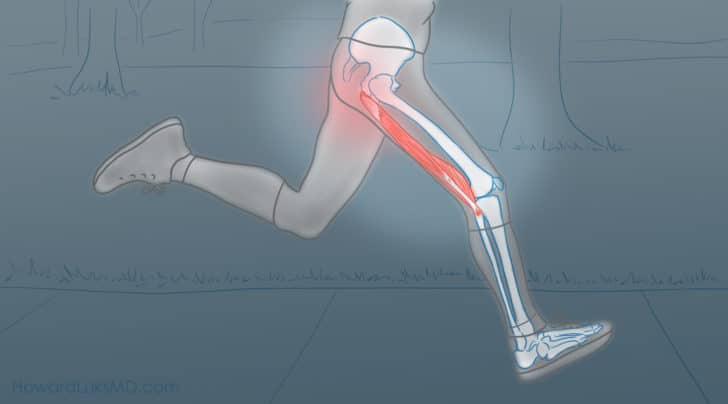
Hamstring injuries can sideline a soccer player for months. Hamstring injuries occur with quick violent movements. If your leg slips out from under you, or if you are tackled and your leg is stretched a ton of stress is put on the entire hamstring group in the back of your thigh. Because hamstring injuries are so common, a lot of attention has been turned towards prevention strategies. Similar to our findings with certain knee injuries, the research shows that the incidence of hamstring injuries can be diminished with a proper warm up.
The hamstring muscles are a large group of muscles on the back of your thigh. They are not typically as explosive or powerful as the quadriceps, but they are under a significant amount of stress during a typical soccer match or football game. Most hamstring injuries occur due to an “eccentric” stretch where the muscle is trying to contract, but the knee (and hamstring) are actually being stretched or lengthened. This puts a ton of stress on the hamstring group and can cause an injury to the muscle or to the hamstring tendon. In soccer, many hamstring injuries occur when a player starts off rapidly after a ball or another player. That produces a violent contraction of the muscle and if too much force is applied by the contraction, the muscle or hamstring tendon can tear.
Hamstring injuries are graded 1 through 3. A grade 3 injury is a complete tear. In these cases, the muscle can tear in the back of your thigh, or the hamstring tendon can actually tear directly off of the bone in the pelvis.
Most hamstring injuries are treated without surgery. Some complete tears may require surgery to repair them, but this is very rare.
Can We Prevent Hamstring Injuries?
Unfortunately, as with knee injuries, even though the data is clear and we know that we can diminish the rate of injuries with a clear prevention protocol, not many clubs or schools have implemented these programs. To make matters worse, even though static stretching will not diminish the risk of injury, and actually causes weakness in the muscle you stretched — it is still very common to see our children going through a static stretching program before each practice or match.
A proper warm up program is an active program. You are moving around to get the muscles to warm up. It starts with a slow jog, and then various drill or short sprints to get the muscles warmed up, establish blood flow and get the muscles ready to work. Recent research shows that short sprints for a few minutes might provide the same degree of protection as a longer warm up.
When specifically trying to diminish the risk of hamstring injuries the research reveals that the Nordic Hamstring Stretch could potentially diminish the risk of injury by 66%.
Bottom Line:
Many hamstring injuries can be prevented. A proper warm up and considering the Nordic stretch could go a long way in minimizing the risk that you or your children and players will be sidelined nursing a pulled hamstring.
This post had used the image below in the header:















